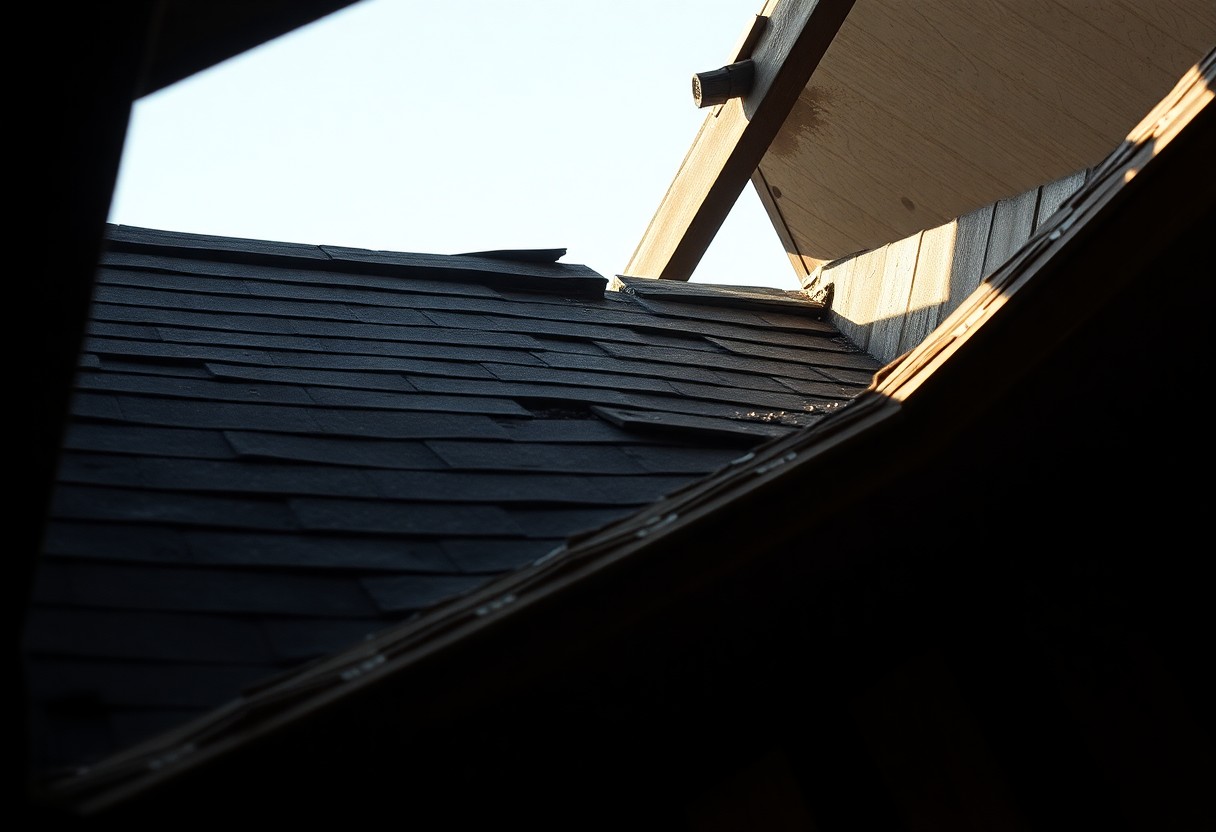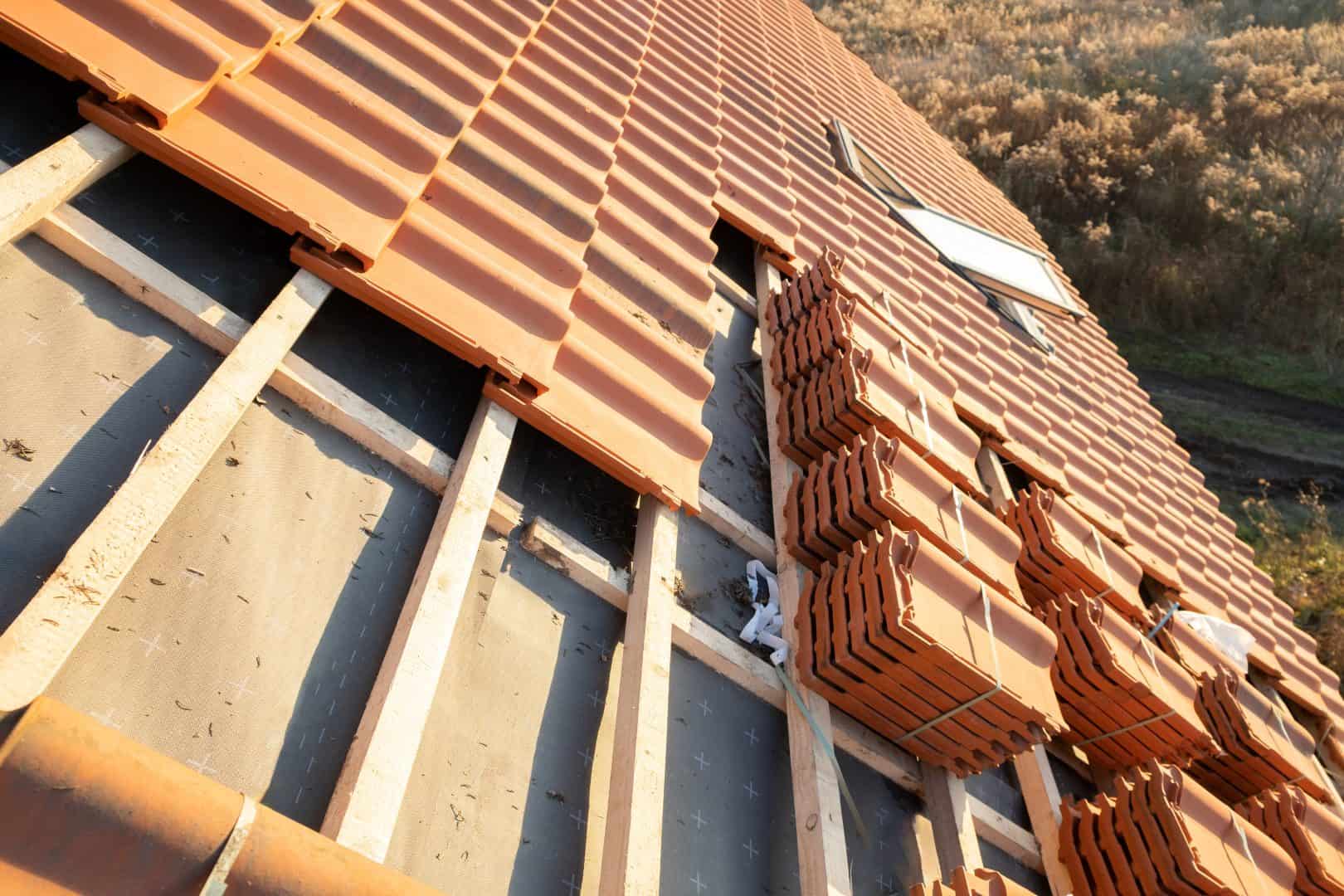What are the signs that I need a new roof?
Fill Out The Form And We'll Get Back To You

Identifying when you require a new roof is vital for maintaining the integrity of your home. Aged roofing can lead to leaks, structural damage, and increased energy costs if not addressed promptly. By keeping an eye out for certain signs, such as missing shingles, water stains on ceilings, or excessive granule loss, you can ensure that your roof remains in good condition. This guide will help you recognise these indicators, allowing you to take appropriate action and protect your property and investment.
Visible Signs of Roof Damage
The signs of roof damage can be evident from the ground or within your home. Always keep an eye out for any anomalies that may indicate a need for repair or replacement. From missing shingles to leaks in your ceiling, these visible signs require your attention to prevent further deterioration and possible costly repairs.
Missing or Damaged Shingles
Across your roof, shingles are your first line of defence against the elements. If you notice any missing or damaged shingles, it’s a clear indication that your roof needs immediate attention. Exposed areas can lead to water infiltration, increasing the risk of further issues inside your home.
Curling or Buckling Shingles
Below your roofline, curling or buckling shingles signify that your roof may be nearing the end of its lifespan. This distortion can occur due to age, improper installation, or inadequate ventilation. Such damage not only impacts aesthetics but also compromises your roof’s ability to protect your home.
The presence of curling or buckling shingles often indicates a structural issue that needs immediate remediation. When shingles start to curl, they can create gaps that allow water to seep beneath them, leading to leaks and extensive damage to your roof’s underlying structure. If you notice this issue, it is wise to consult a roofing professional who can assess the situation and provide the best course of action.
Interior Indicators of Roof Issues
Some clear signs of roof problems can be identified within your home. Discolouration, damp patches, and persistent moisture may suggest your roof has sustained damage. For more information, explore 6 Important Signs You Need a New Roof.
Stains on Ceilings or Walls
Ceilings and walls exhibiting brown or yellow stains can indicate moisture intrusion from a compromised roof. It’s vital to investigate the source of these stains, as they could signify leaks that jeopardise the integrity of your home’s structure.
Mold or Mildew Growth
With excess moisture often comes mould or mildew in your living spaces. If you notice a musty smell or visible growth on your walls, it’s a signal that your roof may be allowing water to seep in, creating a damp environment conducive to mould formation.
Indicators of mould or mildew growth extend beyond mere aesthetics. These fungi can pose health risks, particularly for individuals with allergies or respiratory issues. It’s necessary to address any moisture problems promptly to ensure a safe living environment and to control potential damage to your home.
Age of the Roof
If your roof is nearing the end of its expected lifespan, it’s imperative to evaluate its condition. Most roofs have a lifespan ranging from 15 to 50 years, depending on materials and maintenance. If your roof is approaching or has surpassed this age, it may be time to consider a replacement. Signs of wear, moisture issues, and visible damage can worsen as the roof ages, impacting the safety and integrity of your home.
Roof Lifespan Expectations
To ensure your roof serves its intended purpose, it is imperative to understand its expected lifespan. Asphalt shingles typically last 15 to 30 years, while metal roofs can endure for over 50 years. Regular inspections and timely maintenance can extend this duration, helping you avoid costly repairs or premature replacements.
Material-Specific Considerations
About the materials used in your roof can significantly influence its longevity and maintenance needs. Different roofing materials come with their unique strengths and weaknesses. For instance, slate and metal roofs tend to have longer lifespans compared to asphalt shingles, which may deteriorate faster due to weather conditions.
Hence, understanding the specifics of your roofing material is key to determining its condition. For example, asphalt shingles may require replacement every couple of decades, while metal roofs can last well beyond 50 years with proper care. It’s wise to consider how the local climate affects your roof material, as extreme weather can expedite wear and damage. Consulting a roofing professional can provide you with tailored advice based on your roof type and local conditions. This knowledge will help you make informed decisions about maintenance and replacement when necessary.
Shingle Granules in Gutters
To determine the health of your roof, inspect your gutters for shingle granules. A buildup of these granules can indicate your shingles are deteriorating. As explained in 9 Signs It’s Time to Replace Your Roof, noticing granules in your gutters is a sign that it may be time to consider a roof replacement.
Reasons for Granule Loss
Loss of granules can occur due to age, weather conditions, or improper installation. Over time, the protective granules on your shingles can wear away due to UV exposure, heavy rain, or hail. Additionally, if your shingles have not been correctly installed, they may be more susceptible to shedding granules prematurely.
Implications of Excess Granules
Granules accumulating in your gutters can lead to serious concerns for your roof’s integrity. The loss of these granules weakens the shingles, making them less effective at protecting your home from the elements.
Gutters filled with granules indicate that your shingles are losing their protective layer, which can result in leaks and increased temperatures in your attic. This not only compromises your roof’s lifespan but can also lead to higher energy bills and potential damage to your home’s interior if left unaddressed. Therefore, noticing an excess of granules should prompt you to take action and assess the condition of your roof.
Increased Energy Bills
Once again, if you notice a significant rise in your energy bills, this could indicate that your roof is no longer functioning effectively. An ageing roof may be causing heat to escape in winter and entering in summer, leading to your heating and cooling systems working overtime. To learn more, check out 10 Warning Signs You Need a New Roof – Ledger.
Signs of Poor Insulation
On inspecting your home, if you find certain areas are significantly colder or warmer than others, it may signify poor insulation linked to a failing roof. Insufficient insulation can lead to variations in temperature, making it uncomfortable and potentially raising your energy costs.
Impact on Heating and Cooling
Across your home, an ineffective roof can greatly impact your heating and cooling systems. If your roof allows heat to escape or enter uncontrollably, your heating system will have to work harder during winter months, while your cooling system will struggle during the summer.
Increased strain on your heating and cooling systems not only raises your energy bills but can also shorten the lifespan of these appliances. As a result, you might find yourself facing unexpected expenses for repairs or replacements. Ensuring your roof is in good condition can help maintain efficient energy use and comfort within your home.
Moisture and Water Accumulation
Now, if you notice any signs of moisture or water accumulation on your roof, it could indicate you need a new one. Persistent leaks, stains on the ceiling, or mould growth are clear indicators of water issues. These problems can lead to significant structural damage if left unchecked, so it’s imperative to address them promptly.
Ponding Water on Roof
Before you decide on repairs, check for ponding water on your roof. If water tends to collect in certain areas and doesn’t drain away after a storm, it may compromise the integrity of your roofing material, leading to leaks and premature wear.
Poor Drainage Systems
About your roof’s drainage, ineffective or obstructed drainage systems can exacerbate water accumulation issues. If gutters and downspouts are clogged or inadequately sized, water may not be directed away from your roof efficiently.
Plus, investing time into maintaining and clearing your drainage system can help prolong the life of your roof. Look for overhanging branches, debris build-up, or any blockages that might prevent proper water flow. A well-functioning drainage system not only safeguards your roof but also protects the entire structure of your home from potential water damage.
To wrap up
Ultimately, being aware of the signs that you need a new roof can save you time and money in the long run. Look for missing or damaged shingles, sagging areas, and signs of water damage in your attic or ceilings. If you notice granules collecting in your gutters or drafty rooms, these could also indicate roofing issues. Regular inspections and addressing these signs promptly can help ensure your home remains safe and secure, preventing more extensive damage down the line.
FAQ
Q: What are the visible signs that indicate I need a new roof?
A: There are several visible signs that can suggest the need for a new roof. Look for missing or damaged shingles, which may appear curled, cracked, or broken. Additionally, if you notice granules from shingles in your gutters or around your property, this can indicate deterioration. Another sign is the presence of water stains or mould on your ceilings or walls, which can point to leaks originating from the roof.
Q: How can I determine if my roof is at the end of its lifespan?
A: The lifespan of a roof is typically determined by the materials used. For instance, asphalt shingles generally last around 20-30 years, while metal roofs can last up to 50 years or more. If your roof is approaching this age and shows signs of wear, such as extensive discolouration or significant wear, it might be time to consider a replacement. Consulting a roofing professional for a thorough inspection can also provide clarity on the condition of your roof.
Q: Are there any internal indications that I may need a new roof?
A: Yes, there are several internal signs that may indicate the need for a new roof. Look out for stains on your ceilings or walls, which might suggest leaks. Additionally, if you notice increased energy costs, this may indicate that your roof is no longer providing adequate insulation. An unusual increase in humidity or condensation in your home could also signal flaws in your roofing, leading to potential mould growth and other issues.
Re-Roof of Bungalow
The guys made a fantastic job of replacing the roof on our bunglaow. They were fasy, relaible and excellent value for money.
Chimney Removal
We employed Wrights Roofs to take down our very old chimney – tht had seen better days. They carefully removed and made good the area where the chimney was. Really impressed.
New Roof
We had an extension built and Wrights came and put a new roof on. They were brilliant, no fuss, great value for money. Thank you.
Roofs, Flat Roofs Chimneys and Solar Panels
If you need roof work on your home, please complete the form or call us today.

